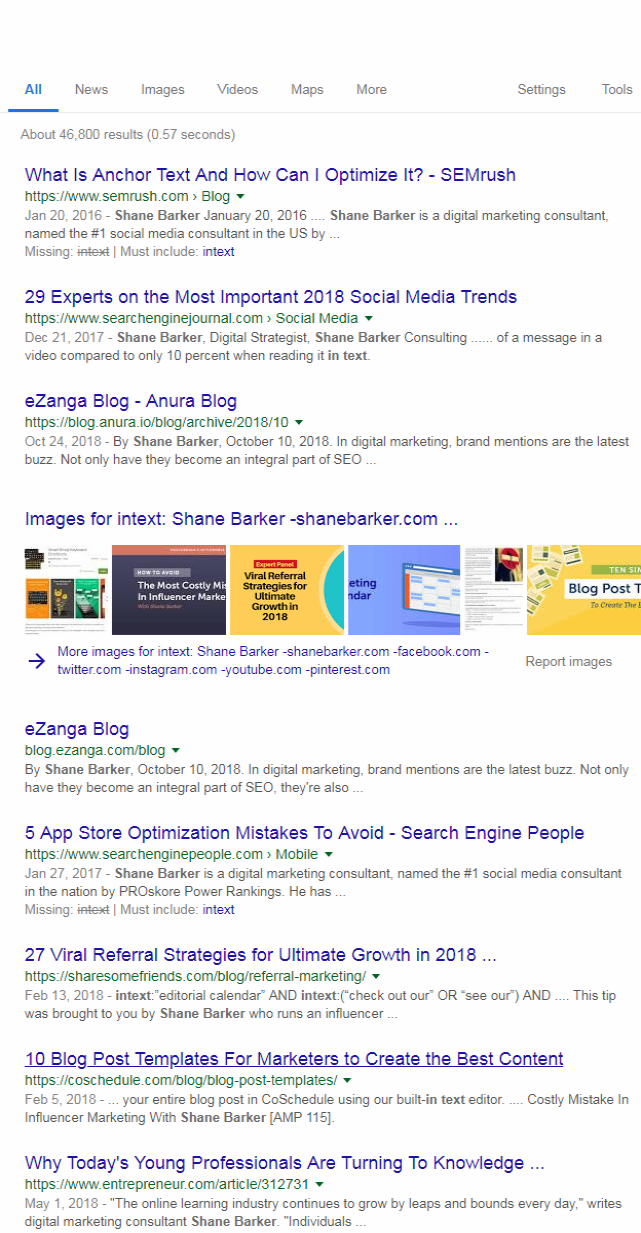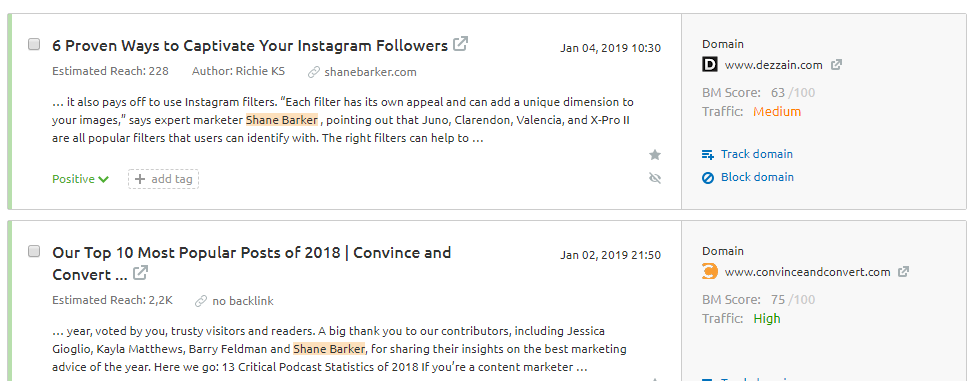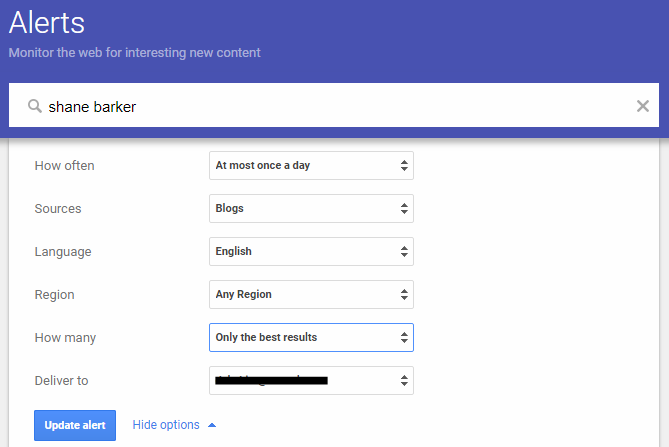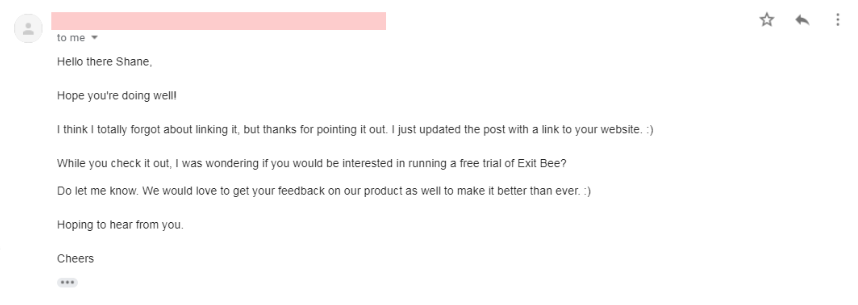How to Turn Unlinked Brand Mentions into Links

Search engines like Google use backlinks to discover new web pages and to determine how well a page should rank in their search results. High-quality backlinks not only help Google find, crawl, and index your web pages, but also improve the authority and trustworthiness of your brand.
That’s why it is crucial for businesses to acquire high-quality, relevant links from other reputable sites. When done the right way, link building can significantly increase your chances of ranking well in the SERPs. It comes with a number of other benefits too, such as:
- It helps you build relationships with key influencers in your industry.
- Links from high traffic websites can help you get referral traffic. If the website is relevant to your niche, chances are that the traffic is also relevant. You can easily capitalize on this targeted traffic to increase conversions.
- High-quality links can help you build a good reputation and authority in your niche. They can help you get more people to trust your brand, products, and services.
That’s why brands and marketers put a lot of time and resources into building high-quality backlinks for their websites. However, there is one strategy that can help you earn hundreds of new backlinks quite easily.
You need to find, capitalize on, and turn unlinked brand mentions into links. Unlinked brand mentions are all web mentions of your brand or anything directly related to your brand that don’t link back to your website.
For instance, if you’re Apple, you can find unlinked mentions of the word “Apple” in tech-related blog posts. You should also look for unlinked mentions of products and services related to your brand such as iPad, Apple Watch, iCloud, and iPhone.
Capitalizing on these unlinked brand mentions won’t just save you time but also add value to the post that mentioned you. This link building strategy can help you earn quick links, diversify your backlink profile, increase traffic, and build your reputation.
Let’s take a look at the step-by-step process that can help you turn unlinked brand mentions into links.
1. Monitor the Web for Unlinked Brand Mentions
Your brand is probably mentioned in hundreds or thousands of places around the web. But how can you find them?
Use Google Search to Locate Your Brand Mentions
Google offers you an opportunity to find your brand mentions. You can search for all of the places where your brand name appears, except your own website and social media channels to discover web mentions of your brand.
For instance, to find my brand mentions, I need to conduct the following search:
intext: Shane Barker -shanebarker.com -facebook.com -twitter.com -instagram.com -youtube.com -pinterest.com
Image via Google Search
This query generated over 51K results, which is great. But then it would require a lot of manual work and time to discover unlinked brand mentions from this list of pages that mention us.
So what do you do now?
Leverage Tools to Find Your Unlinked Brand Mentions
There are a number of tools and platforms that can help you save time and get more accurate results for your brand mentions.
I strongly recommend and use SEMrush’s Brand Monitoring tool to track all online mentions of my brand and other important niche-specific keywords. What I like about SEMrush is that it makes it easier to conduct a thorough and in-depth analysis of all mentions.
It enables you to refine results based on source and publication date, making it easier to identify the most valuable mentions from reputable sources.
SEMrush’s Brand Monitoring score allows you to check the authority and credibility of the websites that mentioned you. This can help you determine whether or not your referring domains are worth getting a link from.
Google Alerts can also be truly helpful if you want to track your brand mentions. It allows you to set up alerts for your brand name and related keywords. When you create an alert, you can choose:
- How often you would like to receive alerts: as it happens, once a day, or once a week
- Sources for your alerts: blogs, news, web, videos, books, or discussions
- Language and region your alerts come from
- How many results you want to see: all results or only the best results
- The email address where Google will send your alerts
Image via Google Alerts
2. Evaluate Outbound links, Prioritize Your Link Prospects
Now that you have a decent list of link building opportunities, you need to evaluate the credibility of each of them.
The following metrics can help you prioritize your link prospects:
- A higher domain authority (DA) and page authority (PA) of the source of your mention
- The number of incoming links from your referring domain
- The number of outbound links
- The relevance of your unlinked mention within the context of the post
You should only request links when they add value to your brand. Avoid negative brand mentions. For instance, if there is a mention for Coca-Cola in an article on, “10 Bad Effects of Coca-Cola,” converting that unlinked mention into a link will do no good for the brand. You don’t want such links.
You should make sure that the post that mentioned your brand is of high-quality. It shouldn’t have issues such as spelling or grammatical errors or broken links. That’s because earning a link from low-quality content won’t do much good to your brand.
However, if there are minor issues in the content, you can always tell the author about it in your outreach email. This can help the author improve the quality of their content and increase their willingness to add your link to the post.
If you want to boost the authority and trustworthiness of your brand, you need to earn high-quality links. That’s why you need to identify and prioritize your link prospects (unlinked brand mentions) based on their relevance, value, and potential.
3. Reach Out to the Author and Request a Link
The next step after you discover those brand mentions that can turn into high-quality backlinks is to devise an outreach strategy.
You need to identify the right person to reach out to. For a website that has multiple editors or contributors, the best person to approach may be the author of the post that mentioned your brand. However, you should make sure that the person is still working for that site and hasn’t left years ago.
(Editor’s note: In the case of Curatti, and I’m sure some other blogs, it’s best to contact us as we alone edit our published posts)
I recommend that you figure out a way to connect with them as a person before you reach out to them as a brand. You can check out their social profiles to learn more about their interests and expertise and probably drop them a quick “Hello” there.
When you finally send an outreach email, address them very carefully. Your email copy shouldn’t be about you getting a link. Instead, it should be about offering something valuable to them.
For instance, I reached out to a reputable publication, asking for a backlink in the bio section of my guest post for them. Here, I offered to include the post in my upcoming newsletter to draw their interest.
And guess what? They did.
Once you have a good reputation and expertise in your industry, even simpler emails may work. Let’s take a look at the following screenshots to see how:
Even though it was a very simple email, the editor happily linked to my website because I had a good relationship with her.
You should try to provide some additional value to convince the author to convert an unlinked brand mention into a linked one. This can not only increase your chances of getting a high-quality link but can also help you build a long-term relationship.
Conclusion
High-quality backlinks significantly impact how Google evaluates the authority, relevance, and trustworthiness of your brand. These links not only help you rank higher in search results but also add to the overall credibility of your brand.
You can consistently monitor your search rankings and brand reputation with effective tools such as Pro Rank Tracker and ReviewTrackers. Tracking your brand mentions can not only help you stay in control of your reputation but also offer opportunities for link building.
In fact, capitalizing on unlinked brand mentions and turning them into links is the most effective strategy to earn quality links quickly. And you can use the step-by-step process mentioned above to master the art of building valuable links for your website.
You may also want to read: A Comprehensive Guide to Broken Link Building
Your Authoritative Link Building Guide (Courtesy of Ahrefs)
Find Link Building Opportunities From Your Competition
Featured image: Copyright: ‘https://www.123rf.com/profile_tai11‘ / 123RF Stock Photo
Shane Barker
Latest posts by Shane Barker (see all)
- How to Use Hashtag Tracking to Optimize Your Social Media Content - January 14, 2021
- How to Engage Your Target Audience Using These 5 Tactics - October 21, 2020
- 5 Things to Keep in Mind for Your Next Digital Marketing Campaign - September 16, 2020








